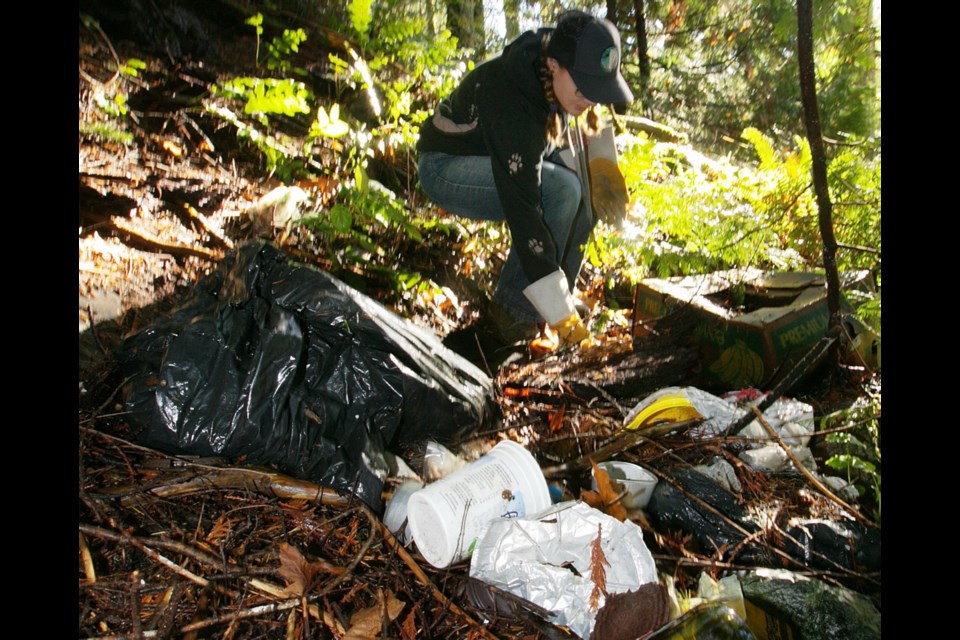Just above the Goldstream River, where thousands of visitors gather to watch the salmon run, the forest is scattered with truckloads of garbage.
Illegal dumping off Finlayson Arm Road is not just unsightly, but has some worried about the health of the ecosystem and potential impact on salmon.
Kathleen Woodruff and Jesse Cook said they first noticed the problem after a hike up Mount Finlayson.
“The first time, we counted and picked up beer cans because some people just drink and throw them on the side of the road. I think we got 96 beer cans from the trail down to our car,” Woodruff said. “That made us start looking more. And once we started looking, it was pretty hard not to see it everywhere.”
The list of dumped items includes but is not limited to: one couch, 11Ú2 cars, asphalt shingles, oil cannisters, fertilizer, animal carcasses and hides, electronics, a power drill and household waste.
Many show signs of age — the couch is covered in moss — and many are buried, at least in part, by fallen leaves. Most are difficult to see from the side of the road, as the land drops off on a steep decline to the river.
The most concentrated waste is just past the boundary of Goldstream Provincial Park, on land is shared by the Malahat, Pauquachin, Tsartlip, Tseycum and Tsawout First Nations. Interview requests were made to each of the nations, but no one could be reached for comment.
Peter McCully, technical adviser for the Goldstream fish hatchery, said the problem has existed for decades.
“We don’t know for sure where it’s coming from, but we have a good idea it’s not the … tribes.”
McCully said he’s most concerned about potential contaminants like hydrocarbons such as oil or gas.
“If there’s contaminants being dumped that could leach into the river, of course that would impact the health of the river — not just the salmon, but the entire food web,” he said.
An average of about 1,000 coho and 30,000 chum spawn in the river each year. There used to be chinook, too, but they’ve virtually disappeared, McCully said.
So far this year, there are fewer chum than expected, which he attributed to heavy fishing, although their run peaks in mid-November. Coho are running strong, he said.
The Goldstreem Volunteer Salmonid Enhancement Association, which runs the hatchery, doesn’t have the capacity to clean up the forest.
“We really have no jurisdiction, nor the resources to clean up that road,” McCully said.
“I’d like to see someone take responsibility for it.”
Farther up the road, the City of Langford has had some success by installing cameras that capture photos of licence plates. It has also identified some illegal dumpers by sorting through the garbage — sometimes finding things such as prescription bottles or mailing addresses, said Lorne Fletcher, the city’s manager of community safety and municipal enforcement.
The city raised the fine to $500 from $100 and requires evidence that the perpetrator ultimately disposed of the garbage properly, such as a landfill receipt, he said.
However, the city has jurisdiction over only the road, not the private property on either side.
Illegal dumping is a common problem for salmon-bearing streams in the province, said Michael Meneer, the Pacific Salmon Foundation’s vice-president for communications.
Anything that degrades the habitat, whether its a chemical or a large object, is bad.
“People need to understand that salmon habitat includes the streams and rivers,” he said. “But it also includes the banks and terrestrial area around the rivers and streams.
“And anything you put on that land that’s leaking or has the potential to leak into the waterflow and into the environment is not good for salmon.”



